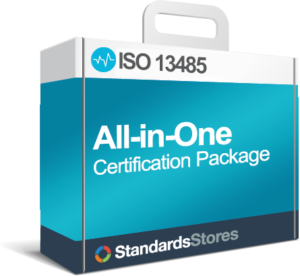Design and Development
By definition of the standard, Design and development clause states that
“The organization shall plan and control the design and development of product.”
During the design and development planning, the organization shall determine
- The design and development stages.
- The review, verification, and validation that are appropriate to each design and development stage.
- The responsibility and authorities for design and development.
- Maintain Design and Development Files.
In plain English, it is a set of processes that transforms requirements into specified characteristics or into the specification of a product, process, or system. Design is the core of any product or service and is very fundamental and basic to achieve customer satisfaction. A good design is carried out logically in a series of steps incorporating appropriate reviews and necessary checks to ensure that the requirements are carried out till the final product unaltered and in a verifiable way. The Design and Development clause of ISO follows the PDCA cycle. Even though the design and development activities have been traditionally applied to manufacturing industry focusing on products it is equally applicable to the service or software industry also.
Steps in Design and Development clause applied to product/service industry:
Planning – Be systematic in the way you design. Whether it is a product or software or a service, follow a series of logical steps and plan your design. Establish a communications plan because it is likely that people from more than one department will be involved in the design activity.
- Breaks the design process into stages and identify deliverables at each stage.
- Identify check points for reviews and its participants.
- Establish a communication plan and mechanism.
- Update necessary records and other organization assets.
Inputs – Evaluate the needs of the customer and determine the inputs for the product carefully. Weigh the regulatory and legal requirements of the customer. Draw the features and characteristics of the product from these and arrive at the logical, functional, performance and other features of the product.
- Identify the product requirements or features.
- Document the features, design protocols, methodologies etc.
Outputs – The format of the output from the design and development process is determined here and baselined. The output can be the functional specification, design plan, drawings, flow charts, service specification etc.
- The output should be verifiable.
- The output should be able to be validated against the requirements.
- The output and its format should be approved.
Review – Where do we apply review check points is determined in this process stage. Reviews will help us make sure that the design is on the right track. When you are working in a large organization, you can form a team and decide when and how the reviews are conducted. The more errors you catch in a design review, the lesser costly it is for you to fix errors in the final product / service.
- Decide on a review frequency, plan for reviews.
- Create procedures to follow the review outputs closely for errors, corrections and implementing it back in the design.
- Keep up-to-date and accurate records.
Verification – Did we do the right thing?
Here we determine whether the design and specifications we created will result in the desired product/service or not. Reviews will help us establish this fact. Once the design is completed, hold a thorough review of the design for all the activities or features.
- Plan and conduct reviews.
- Verify the correctness of the design features against original requirements.
- Record the review findings and take necessary corrective actions.
- If any design change is proposed, document it appropriately and carry it out.
Validation – Did we do it right?
This is a practical test of the product as to whether it does what it is supposed to do. Typically, this is done before the delivery r implementation of the product. You can offer pilot implementations, service trials or release trial products for validation.
It may not always be possible to determine the validation of the product immediately. In such cases, the developer and the customer must mutually come to an agreement and then decide the best way out. We may also take a clue from the previously created designs or best practices of the industry.
- Plan and conduct validation activities to show that the product meets the end requirements.
- Document the results of the activities and take necessary corrective actions if any.
Changes to the design and development – How do we make a change to the design and control many more changes?
Any change to the design should be treated in the same way as the creation of design and all the necessary steps need to be followed in making a change to the design including reviews, verification, validation, approvals and document creation. Once a product is released or a service is established within a set of customers, any new change in the product design can affect all the customers. So, the service provide must wisely carry out the design changes and implement them before release.
- Document the design changes.
- Approve the changes only after review and verification.
- Evaluate the effects of changes.
- Document the results and take necessary corrective and preventive actions if any.
Examples:
- If a cellular operator discovers through call reports that its subscribers are calling only two numbers and that too local numbers, he will make necessary design changes to his service portfolio to introduce a new subscription plan for existing and new subscribers that offer calls to any 2 local numbers at a reduced rate.
- A keyboard manufacturer changes the design of his keyboard to be ergonomic design because he wants people to buy his keyboards and avoid repetitive stress injury to their wrists.


